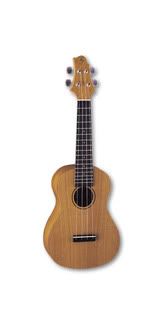Well...since this thread has been resurrected...
I now have two very nearly identical sopranos, one mango and one mahogany. Both are Mainlands made in the same production run, owned only by me and for approximately the same amount of time, strung with identical strings, and with about the same amount of play time on them. I.e. they are about as identical as can be expected, other than the wood type.
They both sound great (and both love heavy fluorocarbon strings) but are very distinctly different. Both have very clear voices and are quite loud (they were louder than many ukes even before I put the heavy strings on). The mahogany has a very meaty, mellow tone while the mango is very noticeably brighter. Harmonics are bell-like on the mahogany vs. chime-like on the mango. I guess I would describe the mango as having a tone closer to traditional Koa ukes, and it is actually a bit brighter than my only Koa uke (that one is a longneck soprano with a concert scale and a slightly larger body though, so it's hard to make a direct comparison).
I can't really say that I prefer one over the other. I've been drifting toward picking the mahogany up more often but I think that is because allergies are killing my voice so I've been doing more ballads lately. I would be very loathe to lose either of them and there are certain songs where I definitely prefer the mango.
If I ever get around to getting a decent condensor microphone I'll make some A/B audio samples and post them somewhere (not on YouTube - by the time they mangle and compress the audio you're lucky to be able to distinguish between a tenor and a soprano, let alone fine nuances between two nearly identical sopranos). In-camera mics and even my SM58 and SM57 don't really do justice to acoustic instruments - for a really meaningful A/B test of acoustic ukes you need really flat response, low noise, and wide dynamic range. I tried doing samples with the SM58 and SM57 and, while you could clearly tell the difference between the two ukes, I wasn't satisfied that the microphones really picked up all of the subtleties.
Finally, I've had a couple of people ask why I went to heavy strings on these two ukes - especially since they were pretty loud with standard strings. These are my first sopranos and I found I just never cared for how light and mushy the strings felt. They sounded great but both the stock Aquila strings and the medium fluorocarbon strings that I put on just felt too soft - it felt like my fingers wanted to catch on them and get tangled up. When I got back from UWC I ordered another spool of Seaguar leader and went to the heavy fluorocarbon strings and got tension closer to what I am used to on my other ukes and the added benefit of the ukes becoming "cannons." I also tried a set on my KoAloha longneck soprano (concert scale) and couldn't take them off fast enough - on that uke they really pinched the sound. All this goes to illustrate that you really need to experiment with different strings on ukes and not just go with a "one size fits all" formula.
John
John

